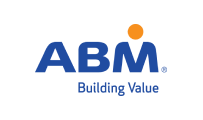The European textile sector is undergoing a pivotal transformation driven by Environmental, Social, and Governance (ESG) principles.
Sustainability is now a top priority across industries. In Europe, textile manufacturers and fashion retailers must adapt to new ESG rules and rising consumer expectations. By 2025, ESG trends will transform design, production, reporting, and marketing in the textile sector. Companies that act early will gain an edge. Those that delay risk damage to their reputation and finances.
-
Corporate Sustainability Reporting Directive (CSRD)
One of the most impactful ESG trends in 2025 is the full implementation of the Corporate Sustainability Reporting Directive (CSRD). This regulation requires large European companies to publish detailed ESG disclosures, including climate-related risks, supply chain transparency, and social impacts. Textile giants like Inditex and PVH are leading the way in adapting to new ESG regulations. To stay ahead, they are investing in digital infrastructure and building strong ESG teams. Inditex, the parent company of Zara, has launched a comprehensive ESG reporting platform. Meanwhile, PVH is enhancing its capabilities in environmental data analytics. These efforts reflect a broader industry shift. Textile professionals must now prepare for a new era of transparency, where both investors and consumers expect clear, verified, and comparable ESG data.
-
Ecodesign for Sustainable Products Regulation (ESPR)
The introduction of the Ecodesign for Sustainable Products Regulation (ESPR) marks another game-changing shift for the industry. This legislation sets out sustainability criteria for textiles, such as durability, reparability, and recyclability. In 2025, European companies are expected to integrate these principles at the design stage. Inditex has already piloted collections that meet ESPR standards by using long-lasting fabrics and modular designs. PVH, meanwhile, is exploring bio-based materials and design-for-disassembly methods. For professionals, adapting product development processes to comply with ecodesign standards is not just a regulatory necessity—it’s also an opportunity to drive innovation and brand loyalty.
-
Digital Product Passports (DPPs)
Digital Product Passports (DPPs) are another emerging ESG trend in the European textile sector. These passports store key information about a product’s environmental and social footprint, from raw materials to end-of-life options. In 2025, companies like Inditex and PVH are expanding pilot programs across Europe, enabling consumers to access transparent sustainability data via QR codes. By embedding DPPs in garments, brands enhance supply chain traceability and build trust with increasingly conscious consumers. Textile professionals should focus on integrating DPPs into their operations and leveraging the data to improve sustainability performance.
-
Green Claims Directive and Marketing Compliance
As sustainability becomes a competitive differentiator, the European Union is clamping down on misleading environmental claims through the Green Claims Directive. This initiative requires companies to substantiate any green marketing with scientific evidence. In 2025, fashion brands operating in Europe must navigate stricter compliance standards. Inditex has revised its marketing language to align with the directive, while PVH has introduced third-party verification for its sustainability labels. Professionals in branding, communications, and compliance need to collaborate closely to ensure all ESG claims are accurate, consistent, and legally sound.
-
Circular Economy Initiatives
Circular economy initiatives are gaining traction as a key ESG trend in 2025. European textile companies are investing in repair, resale, and recycling programs to reduce waste and extend product lifecycles. Inditex’s “Zara Pre-Owned” platform allows customers to resell and repair items, promoting circular consumption. PVH has partnered with recycling firms to develop closed-loop textile systems. These initiatives not only address environmental concerns but also open new revenue streams and enhance brand reputation. Textile professionals should explore circular business models and partnerships to stay ahead in a rapidly evolving landscape.
Looking Ahead: What Professionals Should Watch
Looking ahead to 2025, the convergence of ESG regulations, consumer expectations, and technological innovation is fundamentally reshaping the European textile sector. Companies like Inditex and PVH are setting the benchmark by embedding ESG principles across their operations. For professionals in the industry, the key to success lies in staying informed, investing in ESG skills, and embracing a proactive approach to sustainability. As ESG trends in the European textile sector continue to evolve, those who adapt swiftly will drive lasting value for their businesses and the planet.
As the ESG trends in the European textile sector accelerate, staying ahead demands not only awareness but also education. To support industry professionals in navigating this complex landscape, the Centre for Sustainability and Excellence (CSE) offers specialized training through its Europe/ Sustainability (ESG) Certified Training Course. This course is designed to equip textile sector leaders with the latest tools, regulatory insights, and best practices in ESG integration. Whether addressing CSRD compliance, ESG strategies, or digital transparency, targeted education empowers professionals to lead sustainable transformation confidently







